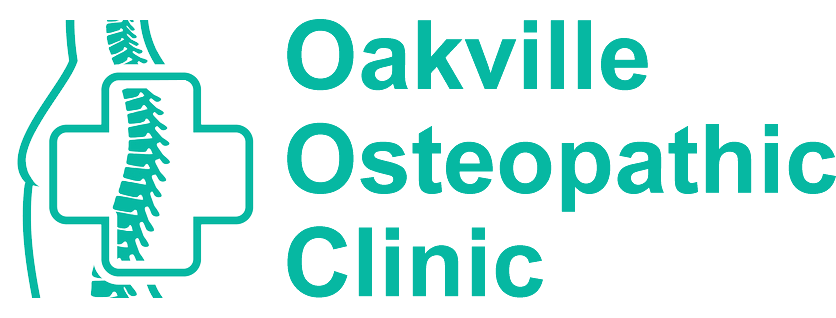How Does An Osteopath Diagnose A Patient’s Condition, And What Techniques Are Used In Treatment?
Do you suffer from chronic pain or have an injury that just won’t heal? If so, it might be time to consider seeing an osteopath. Osteopathy is a holistic form of medical treatment that focuses on joint manipulation and muscle stretching to promote healing in the body. But how does an osteopath diagnose a patient’s condition and what techniques are used in the treatment process? In this article, we’ll explore exactly what goes into diagnosing and treating osteopathy.
The first step for any osteopathic diagnosis is taking the patient’s history. An experienced practitioner will ask questions about which areas are causing discomfort, as well as other relevant information such as lifestyle habits and previous treatments attempted. This helps them get an overall picture of their client’s health before beginning any physical examination. Once they’ve established a baseline understanding of their patient’s condition, they can then begin to assess specific areas using both visual and manual assessment techniques.
Finally, once all available data has been collected, an osteopath will develop a plan for treatment based on both traditional and non-traditional methods. These methods range from massage therapy and chiropractic adjustments to dietary changes and home exercises designed to assist with long-term recovery. With these tools at hand, patients can expect tailored care plans designed specifically for their needs.
If you’re struggling with chronic pain or injuries that don’t seem to be going away no matter what measures you take, it may be worth considering visiting an osteopath for personalized treatment options suited to your unique situation!
Definition Of Osteopathy
I’m sure you’ve heard of osteopathy, but do you know what it is? Osteopathy is a type of manual therapy that focuses on the musculoskeletal system. It’s based on the belief that if your skeleton and muscles are balanced and working together properly, then your body can heal itself more effectively. As an osteopath, I use my hands to diagnose and treat imbalances in the body’s structure, circulation, nerve pathways, and energy flow. My goal is to restore optimal health by optimizing how these systems work together. This approach emphasizes prevention rather than simply treating symptoms. With this in mind, let me explain how an osteopath diagnoses a patient’s condition.

Diagnostic Process Overview
When I visit a patient, the first step is to assess their condition. An osteopath will use physical examination, observation, and palpation to diagnose any musculoskeletal issues. These methods are tried-and-true; they’ve been around since Hippocrates! During my evaluation, I’ll also consider the patient’s medical history and lifestyle in order to get a comprehensive idea of their health. My goal is always to work with the patient collaboratively so that we can determine an effective treatment plan together.
Next up: techniques used in treatment. We’ll look at various therapies such as manipulation or mobilization of joints, massage therapy, exercise prescription, stretching exercises, and more. Each technique has its own unique benefits based on what the individual needs for their body type and condition – these treatments may be combined for optimal results.
Techniques Used In Treatment
An osteopath will usually start with a comprehensive physical and medical history assessment. This includes an examination of the patient’s posture, range of motion in their joints, muscle strength, tenderness, or pain points, as well as testing out any other relevant signs related to the issue being treated. They may also use palpation techniques – applying light pressure to various areas of the body – to assess how they respond. Through this kind of evaluation, an osteopath can identify imbalances that are causing discomfort and create a tailored treatment plan for each individual patient.
Osteopathic care focuses on treating both the cause and symptoms of musculoskeletal issues. Depending on the condition being treated, treatments may include stretches or exercises, massage therapy, spinal manipulation (adjustments), soft tissue therapies like myofascial release or trigger point therapy, therapeutic ultrasound, lifestyle advice such as diet or ergonomic tips for workstations, and/or prescription medications. Osteopathy is about helping your body heal itself naturally by restoring the balance between its structure and function so you can achieve optimal health without relying solely on medication. With this approach in mind, transitioning into discussing the benefits of osteopathic care should be quite simple!
Benefits Of Osteopathic Care
Osteopathy offers a variety of benefits to its patients. Osteopathic treatment is tailored to each individual patient, so the precise outcomes vary from person to person. However, some of the most commonly reported positive effects include increased flexibility and range of motion, decreased pain and discomfort, improved posture and balance, improved circulation, and reduced stress levels.
The holistic approach used in osteopathy also encourages self-care practices such as healthy eating habits and exercise routines that can help build resilience against future issues. Additionally, it helps promote overall well-being by reducing tension in muscles and joints while promoting relaxation. This combination of physical therapy techniques with mental health strategies creates an effective solution for many medical conditions. By focusing on both the mind and body, osteopaths are able to provide comprehensive care plans that result in lasting improvements in overall health.
Osteopathy is an incredibly effective form of treatment that can help provide relief to a variety of conditions. By using techniques such as manual manipulation, soft tissue massage, and joint mobilization, osteopaths are able to diagnose and treat their patients with the utmost care. The diagnostic process takes into account not only physical symptoms but also lifestyle factors in order to create a comprehensive approach for each individual patient. Treatment plans involve customized strategies tailored specifically to the unique needs of every person.
The practice of osteopathy can be likened to a tailor-making of a custom suit; much like how we all have different measurements, our bodies require specific solutions depending on our own circumstances. Osteopaths work tirelessly to understand these individual differences so they can best assist each patient in achieving optimal health. With this holistic viewpoint, it’s no wonder that many people benefit from osteopathic treatments!
Ultimately, by understanding the needs of both body and mind through careful diagnosis and personalized treatment techniques, osteopaths strive to bring balance back into everyone’s lives. Whether you’re dealing with chronic pain or just trying to stay healthy, there is always someone out there ready to help you reach your goals: an osteopath!
